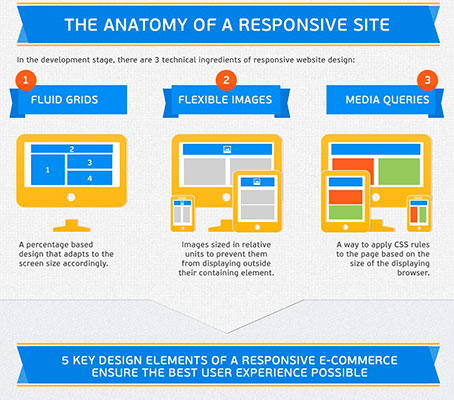Basic Elements Of Web Design: Guidelines For Establishing A User-Centric Site
Basic Elements Of Web Design: Guidelines For Establishing A User-Centric Site
Blog Article
Content Author-Hall Daugaard
When it pertains to web site style, ensuring user-friendliness is essential. From receptive layout to streamlined navigation, every element plays an important role in creating a website that satisfies your target market's requirements. However what regarding the better details that can make or break a user's searching experience? Stay tuned as responsive web design company uncover some often-overlooked suggestions that can boost your web site's use to the next degree, making it really stand out in the electronic landscape.
Significance of Responsive Design
Receptive layout is a vital element of contemporary site development. Guaranteeing your web site is responsive means that it can adjust to different screen sizes and gadgets, supplying a smooth experience for customers.
With the raising use of mobile phones and tablet computers to access the web, having a receptive design is essential for getting to a bigger audience. business website development aids in improving customer experience by making your website very easy to navigate and continue reading any kind of gadget.
Furthermore, receptive style can favorably impact your online search engine positions, as search engines like Google prioritize mobile-friendly websites. By having a receptive style, you're also future-proofing your website, as new devices with varying display dimensions remain to arise.
Simplify Navigation Framework
To enhance user experience and facilitate easy access to details on your web site, enhancing the navigating framework is extremely important. When creating websites sued for ada compliance , concentrate on producing a clear and intuitive navigating menu that helps site visitors locate what they're looking for swiftly.
Restriction the variety of menu things to the essentials, organizing related web pages with each other to stay clear of overwhelming individuals. Use descriptive tags that plainly suggest the content of each page, making it easier for customers to comprehend where each web link will certainly take them.
Take into consideration implementing dropdown menus for subcategories to prevent jumbling the primary navigating bar. Additionally, include a search bar plainly on the web page for users who choose looking for certain information.
Focus on mobile responsiveness in your navigating design to make sure simple accessibility on all gadgets.
Enhance Web Page Tons Speed
Improving web page tons rate is vital for maintaining site visitors on your web site. Slow-loading pages annoy users and can result in high bounce prices. To maximize page lots rate, beginning by enhancing photos. Press pictures without compromising high quality to minimize their file dimensions.
Additionally, make it possible for internet browser caching to store often accessed resources in your area, accelerating load times for returning visitors. Minify CSS, JavaScript, and HTML files by getting rid of unneeded characters, remarks, and formatting, boosting tons speed.
Consider utilizing a material delivery network (CDN) to disperse your website's content across several web servers worldwide, reducing latency for users accessing your website from different places. Finally, limit using third-party manuscripts and plugins, as they can dramatically affect tons times.
Final thought
To conclude, by incorporating responsive style, streamlining navigation, and maximizing web page lots rate, you can produce an user-friendly site that attract a larger audience and boosts user experience. These essential elements guarantee that site visitors can conveniently gain access to and navigate your website across various tools, causing boosted interaction and fulfillment. By concentrating on these crucial aspects, you can develop a successful site that keeps customers returning for even more.
